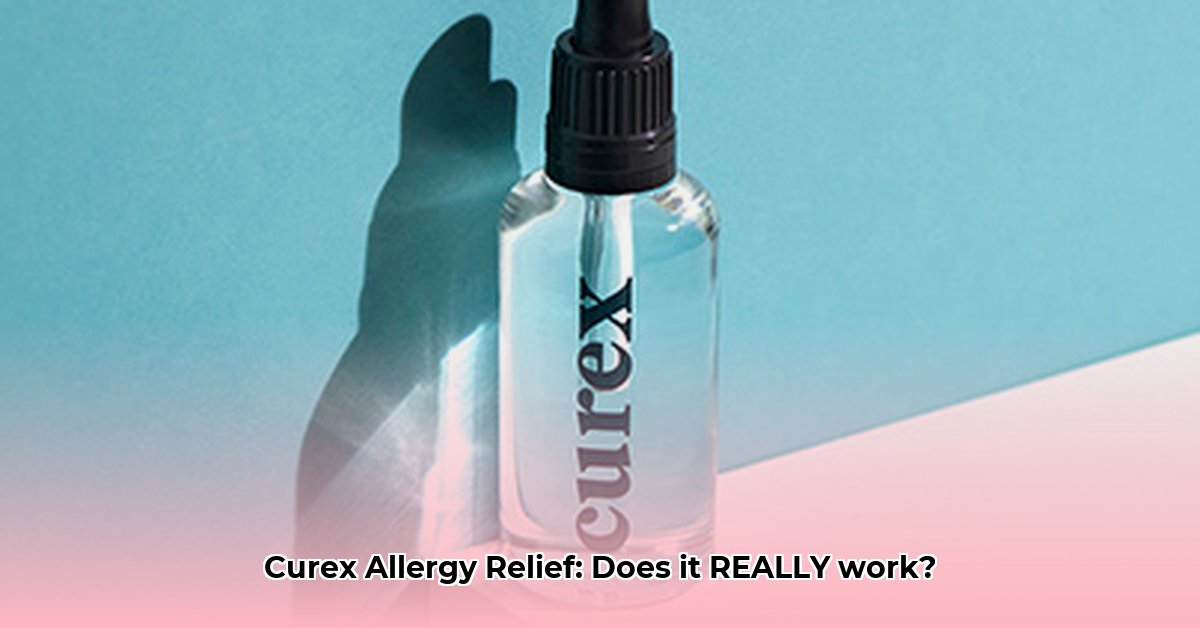
Sublingual immunotherapy (SLIT), like Curex (assuming Curex is an SLIT product), offers a potential alternative to traditional allergy shots for long-term allergy symptom relief. This review examines the effectiveness of SLIT, focusing on the differences between tablets and drops, and helps you determine if it's the right approach for you.
Understanding Sublingual Immunotherapy (SLIT)
SLIT works by gradually introducing tiny amounts of allergens—substances that trigger your allergies—under your tongue. This process trains your immune system to become less reactive to these allergens over time. It's a bit like gradually introducing your body to spicy foods, starting with a small amount and slowly increasing the intensity. This approach, unlike allergy shots, avoids the sudden and potentially strong immune response. Does SLIT work consistently? The answer is nuanced.
How Does SLIT Work?
SLIT involves a gradual increase in allergen dosage ("escalation phase") followed by a maintenance dose. This typically spans several months. The precise schedule and dosage depend on individual factors and are determined by your allergist. The aim is long-term symptom reduction not immediate relief. Is this gradual approach effective? Research suggests it is for many people.
Curex: Weighing the Pros and Cons of SLIT Drops and Tablets
SLIT is available in two forms: tablets and drops. If Curex is a drop-based SLIT product, understanding the differences is crucial.
SLIT Tablets: A Standardized Approach
Pros:
- Often FDA-approved for specific allergens.
- Typically covered by insurance.
- Easy to administer.
Cons:
- Limited allergen options.
- May not be suitable for all allergies or individuals.
SLIT Drops (e.g., Curex): A Personalized Approach
Pros:
- Highly customizable to individual allergy profiles.
- Potentially effective for a wider range of allergies.
- Some individuals find them more effective than tablets.
Cons:
- Usually not covered by insurance, leading to higher costs.
- Requires careful adherence to the doctor's instructions.
So, does Curex, or SLIT in general, work? The answer depends on several factors. While research shows SLIT effectively reduces allergy symptoms for many, individual experiences and the choice between tablets and drops significantly impact outcomes.
What the Research Says
Numerous studies indicate SLIT's effectiveness in reducing allergy symptoms such as sneezing, nasal congestion, and itchy eyes. The World Health Organization recognizes SLIT as a safe and effective treatment. Improvements are generally seen within three to four months of consistent use. However, individual responses vary considerably. Is there a guaranteed success rate? No, but studies show significant success for many.
Navigating SLIT: A Step-by-Step Guide
- Consult an Allergist: Diagnosis and personalized treatment plan creation are essential.
- Adhere to the Treatment Plan: Precise dosage and schedule adherence is crucial, especially during the escalation phase.
- Monitor for Side Effects: Mild side effects like mouth irritation are possible; report more serious reactions immediately.
- Attend Regular Check-ups: Monitoring treatment progress and making adjustments as needed are vital.
SLIT Tablets vs. SLIT Drops: A Comparison
| Feature | SLIT Tablets | SLIT Drops (like Curex, assuming it's a drop) |
|---|---|---|
| FDA Approval | Often Yes | Often No |
| Insurance Coverage | Usually Covered | Usually Not Covered |
| Cost | Lower | Higher |
| Allergen Options | Limited | Highly Customizable |
The choice between tablets and drops significantly influences both effectiveness and cost. Your allergist assists in determining what approach best suits your needs and budget to maximize both efficacy and affordability.
Key Takeaways:
- SLIT offers a viable alternative to allergy shots.
- Both tablets and drops aim for long-term symptom relief.
- FDA approval and insurance coverage drastically vary.
- Tablets are often approved and covered, while drops offer greater customization at a higher cost and without typical insurance coverage.
- While efficacy is comparable, the best choice depends on individual needs, budget, and allergen profile.
Remember, consistency and adherence to your doctor's recommendations are crucial for successful SLIT treatment regardless of the chosen format. Consulting your allergist is essential to make an informed decision about which SLIT approach is best suited for your specific allergy profile and personal circumstances.